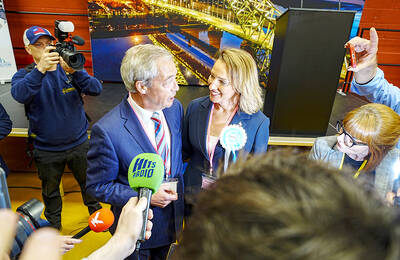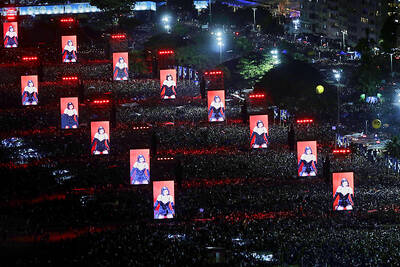The first sign that something was amiss came a few days before Christmas Eve 2003. The US department of homeland security raised the national terror alert level to "high risk." The move triggered a ripple of concern throughout the airline industry and some 30 flights were grounded, including long hauls between Paris and Los Angeles and subsequently London and Washington.
But in recent weeks, US officials have made a startling admission: the key intelligence that prompted the security alert was seriously flawed. CIA analysts believed they had detected hidden terrorist messages in al-Jazeera television broadcasts that identified flights and buildings as targets. In fact, what they had seen were the equivalent of faces in clouds -- random patterns all too easily over-interpreted.
At the heart of the fiasco lies a technique called steganography, the art, and now hardcore science, of hiding messages. There's nothing new about steganography, in principle at least. Herodotus tells the tale of Histiaeus who, in the sixth century BC, shaved the head of his most trusted slave, tattooed a message on his scalp and let his hair regrow. The slave then travelled unchallenged to Aristagoras, who was instructed to shave the slave's head, revealing the message urging him to revolt against the Persians. In common with modern steganography, it ensured that outsiders didn't know a secret message existed.
But to experts, the idea al-Qaeda would be passing steganographic messages through TV broadcasts is ludicrous.
"When they worked out the tactics of the 9/11 perpetrators, what they did was get in a car, drive some place and meet someone and have a conversation, they didn't even get online," says Peter Honeyman, steganography expert and scientific director of the center for information technology integration at the University of Michigan. "Why were the CIA believing that they were seeing something in al-Jazeera broadcasts? I can't fathom it."
The CIA had been using computers to look for hidden messages in the headlines that scroll along the bottom of al-Jazeera broadcasts, a feature used by most rolling news broadcasters. What the CIA was up to found its way into the intelligence community rumor mill and got back to the satellite channel.
"We were aware there were intelligence reports saying that al-Qaeda or its supporters might be communicating in ways that were unconventional. There were certain whispers that perhaps they were using al-Jazeera and other organizations, something we refuted categorically," says Jihad Ballout, al-Jazeera's spokesman in Qatar.
"It's funny and it's frustrating at the same time as far as al-Jazeera's concerned. We're fed up with these rumors that al-Jazeera is a conduit for communication for any group."
Confirmation that the CIA had been hunting for hidden messages in broadcasts -- and had turned up some curious results -- came in June when US officials talked to NBC News. During the interview, the officials told how technicians at the CIA's directorate of science and technology believed they had found numbers embedded in al-Jazeera's news strip that corresponded with a hotch-potch of targets.
There were dates and flight numbers, coordinates for high-profile sites such as the White House, as well as information apparently pointing to the small town of Tappahannock, Virginia.
Security experts have developed several ways to embed messages in images and video streams. One of the simplest methods is to take a frame of an image made up of pixels and alter it very slightly.
"Every pixel is represented by three colors -- red, green and blue -- and each has a value from zero to 255 that represents the intensity of that color. It turns out you can change the bits, make an odd number even, and an even number odd, which changes the perceived color so little, it's difficult to tell anything's been done to it," says Honeyman, who adds that a megapixel-sized image could carry a secret message of 50,000 words.
The problem with hunting messages hidden by steganography is that there are so few of them, any computer program will come up with false positives -- messages that aren't really there. "The false positive rate, even if it's vanishingly small, starts to throw signals at you that makes you want to believe you're seeing messages."
"And somebody could be fooled by that if they didn't understand the nature of steganography," says Honeyman.

Kehinde Sanni spends his days smoothing out dents and repainting scratched bumpers in a modest autobody shop in Lagos. He has never left Nigeria, yet he speaks glowingly of Burkina Faso military leader Ibrahim Traore. “Nigeria needs someone like Ibrahim Traore of Burkina Faso. He is doing well for his country,” Sanni said. His admiration is shaped by a steady stream of viral videos, memes and social media posts — many misleading or outright false — portraying Traore as a fearless reformer who defied Western powers and reclaimed his country’s dignity. The Burkinabe strongman swept into power following a coup in September 2022

‘FRAGMENTING’: British politics have for a long time been dominated by the Labor Party and the Tories, but polls suggest that Reform now poses a significant challenge Hard-right upstarts Reform UK snatched a parliamentary seat from British Prime Minister Keir Starmer’s Labor Party yesterday in local elections that dealt a blow to the UK’s two establishment parties. Reform, led by anti-immigrant firebrand Nigel Farage, won the by-election in Runcorn and Helsby in northwest England by just six votes, as it picked up gains in other localities, including one mayoralty. The group’s strong showing continues momentum it built up at last year’s general election and appears to confirm a trend that the UK is entering an era of multi-party politics. “For the movement, for the party it’s a very, very big

ENTERTAINMENT: Rio officials have a history of organizing massive concerts on Copacabana Beach, with Madonna’s show drawing about 1.6 million fans last year Lady Gaga on Saturday night gave a free concert in front of 2 million fans who poured onto Copacabana Beach in Rio de Janeiro for the biggest show of her career. “Tonight, we’re making history... Thank you for making history with me,” Lady Gaga told a screaming crowd. The Mother Monster, as she is known, started the show at about 10:10pm local time with her 2011 song Bloody Mary. Cries of joy rose from the tightly packed fans who sang and danced shoulder-to-shoulder on the vast stretch of sand. Concert organizers said 2.1 million people attended the show. Lady Gaga

SUPPORT: The Australian prime minister promised to back Kyiv against Russia’s invasion, saying: ‘That’s my government’s position. It was yesterday. It still is’ Left-leaning Australian Prime Minister Anthony Albanese yesterday basked in his landslide election win, promising a “disciplined, orderly” government to confront cost-of-living pain and tariff turmoil. People clapped as the 62-year-old and his fiancee, Jodie Haydon, who visited his old inner Sydney haunt, Cafe Italia, surrounded by a crowd of jostling photographers and journalists. Albanese’s Labor Party is on course to win at least 83 seats in the 150-member parliament, partial results showed. Opposition leader Peter Dutton’s conservative Liberal-National coalition had just 38 seats, and other parties 12. Another 17 seats were still in doubt. “We will be a disciplined, orderly